 Brussels,Belgium-Iran, seeking to bolster its air defenses amid rising tensions over its nuclear program, is likely to turn to Russia and China for the warplanes needed to replace its obsolete U.S. jets, analysts say.Both Moscow and Beijing refuse to comment on reports in the Israeli and Russian media, along with Western aviation publications, that Iran aims to order Russian Sukhoi Su-30 and Chinese Chengdu J-10 combat aircraft.But analysts note that Tehran is already committed to a sweeping modernizing program for the Islamic Republic of Iran Air Force (IRIAF) and that Tehran cannot obtain top-of-the-line jets from any other source due to a Western arms embargo. They also say that all three nations are very secretive when it comes to defense sales.«It is clear that Iran has been trying for some time now to buy the last generation of jet fighters,» said Claude Moniquet, president of the European Strategic Intelligence and Security Center, a Brussels-based think-tank. «Most of their equipment is from the 1970s, so they cannot confront a modern air force.The Su-30 _ a highly capable multi-role fighter-bomber _ has been widely exported. Hundreds have been ordered by India, Malaysia, Algeria, China, Venezuela, Indonesia and Vietnam.«Iran has got to get an air defense capability somewhere, and China and Russia are the best sources to get it from,» said Steven Trimble, Washington correspondent for the trade magazine Flight International. The magazine reported that Iran was negotiating to buy 250 Su30s and about 40 J-10s.Paradoxically, if Tehran succeeds in upgrading its air force, it may end up with technology from archenemy Israel. The J-10 is strikingly similar to Israel's defunct Lavi fighter project. There has long been speculation that the Lavi's technology somehow found its way to China.«If reports (that Israel provided the technology to China) turned out to be true, it wouldn't be particularly surprising or unexpected,» said Prof. Gerald Steinberg, chairman of political sciences at Bar Ilan University, in Tel Aviv. «For Israel the international arms market is quite limited, and its only real customers are China, India and Turkey.Thirty-six J-10s already have been sold to Iran's neighbor Pakistan, another Islamic nation seeking to modernize its air force.Mark Ayton, editor of Air Forces Monthly, said there have been a flurry of reports in recent months suggesting that IRIAF is close to signing a huge order with Rosoboronexport, Russia's state arms trader.«This would be the largest single order ever placed for the (Su-30),» Ayton said.Russia has previously sold other advanced weaponry to Iran, including 24 MiG-29 interceptors, a dozen Su-24 attack jets, and several dozen short-range Tor-M1 anti-aircraft missile systems.Iran's Foreign Ministry would neither confirm nor deny on reports that Iran was seeking to purchase jets from Russia and China. «Cooperation between Iran, Russia and China is within the framework of international regulations,» Foreign Ministry spokesman Mohammad Ali Hosseini said.In Moscow, a spokesperson for Rosoboronexport said she could make no immediate comment on reports that Moscow and Tehran were negotiating a sale of the Sukhoi jets.In 2006, Washington imposed sanctions against Sukhoi over its ties with Iran, but those were soon lifted to allow Boeing Co. to continue development with Sukhoi of their joint Superjet airliner.Iran maintains its nuclear program is exclusively civilian, aimed only at producing electricity. But Western governments believe that Tehran is intending to develop a nuclear arsenal, and Iran's failure to suspend its nuclear activities has already led to two sets of U.N. sanctions.Bellicose statements by White House officials have fueled rumors of a possible U.S. air and cruise missile attacks on Iran's nuclear installations and other military targets. Israel has also hinted it could strike at Iran over its nuclear program.During the pro-Western rule of Shah Reza Pahlavi, Iran's air force was considered the best-equipped in the region and operated some of America's most capable aircraft. In the 1970s Iran was the sole foreign customer of the Grumman F-14 Tomcat swing-wing fighter.But following the installation of an Islamist regime in 1979, relations quickly soured and resulted in a U.S. arms embargo that remains to this day.Left without spare parts during the 1980-1988 Iran-Iraq war, the IRIAF had to keep its planes in the air by cannibalizing other jets.Then, following the 1991 Gulf War, the air force was reinforced when dozens of Iraqi pilots fled with their jets to Iran. And in the 1990s, Russia supplied limited numbers of Mig-29s and Su-24s.More recently, Iran has tried to develop its own indigenous manufacturing capability. The Saegeh (Thunderbolt) light fighter, which appears based on the old American F-5, has just come off the production line.Although the exact size and composition of the air force remains unknown, experts agree that the bulk is still made up of Vietnam War-era F-14s, F-4 Phantoms and F-5s.While the planes are still able to provide a credible air defense and could in theory reach major U.S. military bases in Iraq or elsewhere in the region, they do not have the range to strike at Israel.«Iran is very, very far from Israel,» said Yiftah Shapir, a military analyst at Tel Aviv's Institute of National Security Studies. «We cannot ignore it altogether, but the probability of any real aerial bombing now or in the future by Iran is very slim indeed.Associated Press writers Ali Akbar Dareini in Tehran, and Vladimir Isachenkov in Moscow contributed to this report.
Brussels,Belgium-Iran, seeking to bolster its air defenses amid rising tensions over its nuclear program, is likely to turn to Russia and China for the warplanes needed to replace its obsolete U.S. jets, analysts say.Both Moscow and Beijing refuse to comment on reports in the Israeli and Russian media, along with Western aviation publications, that Iran aims to order Russian Sukhoi Su-30 and Chinese Chengdu J-10 combat aircraft.But analysts note that Tehran is already committed to a sweeping modernizing program for the Islamic Republic of Iran Air Force (IRIAF) and that Tehran cannot obtain top-of-the-line jets from any other source due to a Western arms embargo. They also say that all three nations are very secretive when it comes to defense sales.«It is clear that Iran has been trying for some time now to buy the last generation of jet fighters,» said Claude Moniquet, president of the European Strategic Intelligence and Security Center, a Brussels-based think-tank. «Most of their equipment is from the 1970s, so they cannot confront a modern air force.The Su-30 _ a highly capable multi-role fighter-bomber _ has been widely exported. Hundreds have been ordered by India, Malaysia, Algeria, China, Venezuela, Indonesia and Vietnam.«Iran has got to get an air defense capability somewhere, and China and Russia are the best sources to get it from,» said Steven Trimble, Washington correspondent for the trade magazine Flight International. The magazine reported that Iran was negotiating to buy 250 Su30s and about 40 J-10s.Paradoxically, if Tehran succeeds in upgrading its air force, it may end up with technology from archenemy Israel. The J-10 is strikingly similar to Israel's defunct Lavi fighter project. There has long been speculation that the Lavi's technology somehow found its way to China.«If reports (that Israel provided the technology to China) turned out to be true, it wouldn't be particularly surprising or unexpected,» said Prof. Gerald Steinberg, chairman of political sciences at Bar Ilan University, in Tel Aviv. «For Israel the international arms market is quite limited, and its only real customers are China, India and Turkey.Thirty-six J-10s already have been sold to Iran's neighbor Pakistan, another Islamic nation seeking to modernize its air force.Mark Ayton, editor of Air Forces Monthly, said there have been a flurry of reports in recent months suggesting that IRIAF is close to signing a huge order with Rosoboronexport, Russia's state arms trader.«This would be the largest single order ever placed for the (Su-30),» Ayton said.Russia has previously sold other advanced weaponry to Iran, including 24 MiG-29 interceptors, a dozen Su-24 attack jets, and several dozen short-range Tor-M1 anti-aircraft missile systems.Iran's Foreign Ministry would neither confirm nor deny on reports that Iran was seeking to purchase jets from Russia and China. «Cooperation between Iran, Russia and China is within the framework of international regulations,» Foreign Ministry spokesman Mohammad Ali Hosseini said.In Moscow, a spokesperson for Rosoboronexport said she could make no immediate comment on reports that Moscow and Tehran were negotiating a sale of the Sukhoi jets.In 2006, Washington imposed sanctions against Sukhoi over its ties with Iran, but those were soon lifted to allow Boeing Co. to continue development with Sukhoi of their joint Superjet airliner.Iran maintains its nuclear program is exclusively civilian, aimed only at producing electricity. But Western governments believe that Tehran is intending to develop a nuclear arsenal, and Iran's failure to suspend its nuclear activities has already led to two sets of U.N. sanctions.Bellicose statements by White House officials have fueled rumors of a possible U.S. air and cruise missile attacks on Iran's nuclear installations and other military targets. Israel has also hinted it could strike at Iran over its nuclear program.During the pro-Western rule of Shah Reza Pahlavi, Iran's air force was considered the best-equipped in the region and operated some of America's most capable aircraft. In the 1970s Iran was the sole foreign customer of the Grumman F-14 Tomcat swing-wing fighter.But following the installation of an Islamist regime in 1979, relations quickly soured and resulted in a U.S. arms embargo that remains to this day.Left without spare parts during the 1980-1988 Iran-Iraq war, the IRIAF had to keep its planes in the air by cannibalizing other jets.Then, following the 1991 Gulf War, the air force was reinforced when dozens of Iraqi pilots fled with their jets to Iran. And in the 1990s, Russia supplied limited numbers of Mig-29s and Su-24s.More recently, Iran has tried to develop its own indigenous manufacturing capability. The Saegeh (Thunderbolt) light fighter, which appears based on the old American F-5, has just come off the production line.Although the exact size and composition of the air force remains unknown, experts agree that the bulk is still made up of Vietnam War-era F-14s, F-4 Phantoms and F-5s.While the planes are still able to provide a credible air defense and could in theory reach major U.S. military bases in Iraq or elsewhere in the region, they do not have the range to strike at Israel.«Iran is very, very far from Israel,» said Yiftah Shapir, a military analyst at Tel Aviv's Institute of National Security Studies. «We cannot ignore it altogether, but the probability of any real aerial bombing now or in the future by Iran is very slim indeed.Associated Press writers Ali Akbar Dareini in Tehran, and Vladimir Isachenkov in Moscow contributed to this report.As in the days of Noah...









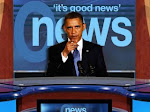


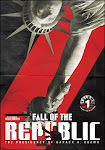




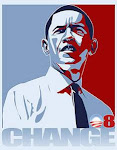









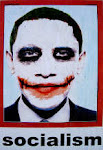










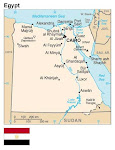


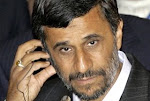



















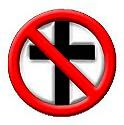
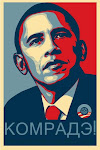
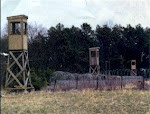




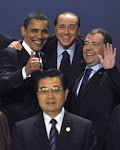












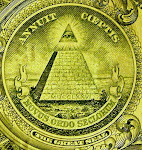
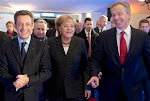



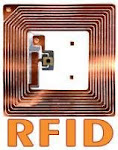.bmp)



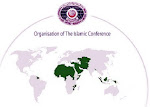







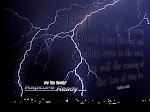







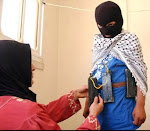





.bmp)